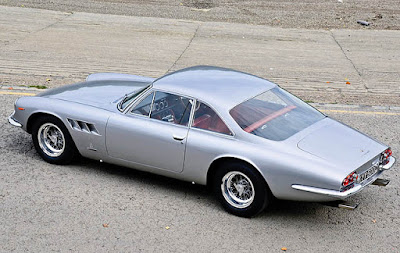ONE-OFF Of course, the world's car lovers must be familiar and understand, when asked about one of the characteristics of BMW car models. Just by looking at what is on the front of those car, there's a distinctive kidney-shaped grille, we can find out about. Then when you look at the following classic BMW car, you will not find those typical-griles characteristics are. Who designed those BMW car model?
 |
| 1957 BMW 507 Loewy Concept designed by Raymond Loewy and built by Pichon et Parat, a Paris-based coachbuilder. (Picture from: Conceptcarz) |
 |
| 1957 BMW 507 Loewy Concept built based on the legendary BMW 507 under totally unusual styles and designs. (Picture from: Conceptcarz) |
He is best known as the designer of the current Shell logo as well as the Lucky Strike logo. In the world's automotive, he is indeed famous for his eccentric works and it could be seen on one of his costly experimental design works called the 1941 Loewy Lincoln. Then he was also known as an automotive designer for Studabaker and one of his famous works is Studebaker Avanti. No wonder if some called him as Father of Industrial Design.
 |
| 1957 BMW 507 Loewy Concept powerd by a a 150 horsepower V8 used dual Zenith carburetors, wore aluminum cylinder heads, had dual exhaust and a four-speed gearbox. (Picture from: BMWBlog) |
 |
| 1957 BMW 507 Loewy Concept was used by by Raymond Loewy as a private vehicle before being donated to the Natural History Museum in LA in the 1962. (Picture from: Conceptcarz) |
To make his dream car come true, he sent the 507 chassis to Sens, southeast of Paris, to make the bodywork as his desires at the Pichon et Parat, a specialist coachbuilding company best known for creating several unique one-off bodies on a variety of chassis in the 1950s. At first glance, if you look at the BMW 507 Loewy concept car from the side, it will be clear where he got the inspiration for his later Avanti.
 |
| 1957 BMW 507 Loewy Concept sat on display at the 2013 Peeble Beach Concours. (Picture from: BMWBlog) |
Besides that in the BMW 507 Loewy concept car, you will not find any more distinctive features of those Bavarian car, ranging from the grille shape, headlights and so on. It's totally changed. Perhaps what remains is the engine under the hood, which is a 150 horsepower V8 used dual Zenith carburetors, wore aluminum cylinder heads, had dual exhaust and a four-speed gearbox.
After completion, this concept car was exhibited for the first time at the Paris Auto Salon 1957 although there were no plans to put it into production as it was originally intended as a study design only. After the expo, the car is known to be the Loewy personal vehicle and had seen many times to be driven by him in the French Rivera.
And when he flew back to New York, Loewy brought this car along with him, then pinned NY plates on it and drove for several years before donating it in 1962 to the Natural History Museum in Los Angeles. The Loewy concept car last appearance in front of the world's automotive public occurred at the 2013 Pebble Beach Concours. *** [EKA | FROM VARIOUS SOURCES | CONCEPTCARZ | BMWBLOG ]
Note: This blog can be accessed via your smart phone.






































